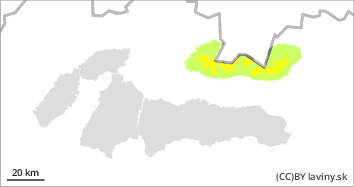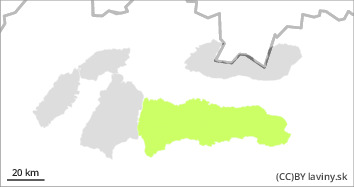
Danger level
 | 2000m |
|  |
|  |

Watch out for wind-slabs on leeward sides. At the highest elevations there may be locally more new snow.
In the High and Western Tatras there is a moderate avalanche danger above 2000 m above sea level. The main avalanche problem is wind-blown snow. Especially the leeward sides of ridges, narrow couloirs and places under rock walls are dangerous. Particularly in these places there may be wind-blown slabs of varying hardness. They can be loosened, especially on steep slopes with high additional loads. Particularly dangerous are S, SE and E orientations. Small to medium sized slab avalanches are a risk in combination with terrain traps. Spontaneous avalanches are not expected.
Snowpack
The snow cover is hard to icy in many places due to the significant cooling. Up to 10cm of new snow has fallen in the last 24 hours, but it is very unevenly distributed due to strong winds. At the highest altitudes, particularly in narrow couloirs and on the leeward sides of ridges, there may be a large amount of new snow, which poses a potential risk when loaded. Most snow is found in north-easterly to easterly orientations. Continuous snow cover is found above 1600 m above sea level.
Tendency
With snowfall and cold temperatures rising.


